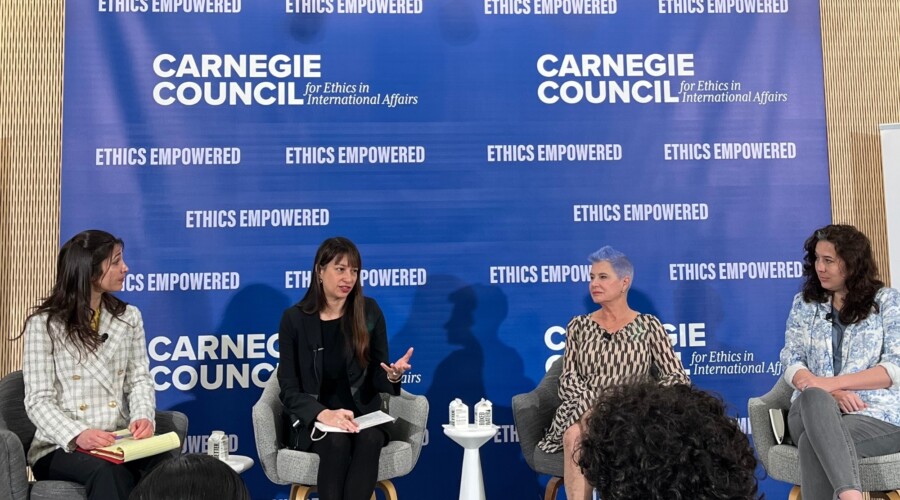Only a couple of years ago, NATO stated in its Strategic Concept that the Euro-Atlantic space is an area of peace and that the threat of conventional attack against the territory of any member state was very low. Today, after almost two decades of out-of-area expeditions, including engagement in Afghanistan, the perception of threats is very different. Simultaneously NATO must protect itself from Russian threats on its Eastern borders and ISIS to the South, plus terrorism and cyber attacks, while also managing the flow of migration and patrolling the seas. It's time now not only to rethink NATO's strategic concept, but also to prove its resilience as it faces multiple crises. Therefore the upcoming NATO summit (July 8-9) where all heads of member states will gather, this time in Warsaw, Poland is of paramount importance.
On the Eastern flank the challenge for NATO is almost existential. Some may say that this is an overstatement, but let's look at the facts. Untill now, according to the German Marshall Fund, the ratio of force between Russia and NATO in the Northeastern corner of the Alliance is 10:1. Kaliningrad is the most militarized area in Europe. Russia not only openly considers NATO its enemy, but it has already invaded one of the Alliance's neighboring states and annexed part of its territory. It is a nuclear-armed power, a fact frequently invoked in Russia's rhetoric, which makes public threats if a NATO member wants to host a missile system on its own land. When a country like Sweden thinks about joining the Alliance, Russia publicly announces that it will respond militarily.
Just imagine what would happen if Russia cuts off the so-called "Suwalki gap," a corridor that connects the three Baltic states with the rest of NATO's territory. We would face either war or the end of NATO. The best deterrence strategy to avoid war is to be prepared for this. It is not just a matter of how many battalions will be present on a rotational basis because it is far below what is needed to be ready for the worst-case scenario on the Eastern flank. Political unity will not count very much if it's not bound to fast military counteraction. Therefore the Warsaw summit results should be viewed as just a tiny part of a long-term strategic re-adaptation of NATO.
Part of this course should also be an updated NATO nuclear strategy. There is no reason why we should not treat Russian threats seriously. But successful deterrence also demands a common understanding, or the so-called "playbook," of what constitutes hybrid war and what is the immediate decision-making process of the Alliance if that fact occurs. Hybrid war now contains many new aspects that until recently seemed difficult to imagine: massive info war, cyber attacks, or financial support for populist movements active in NATO countries.
Therefore a robust response would need strong NATO-EU cooperation, and that is missing now. More than ever we should seek ways to overcome the Turkish-Cypriot-Greek problem that is one of the factors unreasonably blocking this much-desired unity of action. We urgently need it for the security of NATO's Eastern and Southern neighborhoods where the Turks and Greeks both have different tools at their disposal; their strategies should be synchronized. It was the solidarity clause of the EU Lisbon Treaty, not the famous Article 5 of NATO, which was invoked by France after the Paris terrorist attack. Therefore it is important that the Central and Eastern European countries on one side, and those of Western Europe on the other, all understand that the geographical balance of NATO engagement must be maintained and carefully crafted.
NATO should also stress the maintenance of an "open door" policy. It does not mean yet that we are closer to starting the discussion of NATO membership for Georgia or Ukraine. But welcoming Montenegro on board is a good occasion to point out that every country in the Euro-Atlantic area that fulfills the criteria is entitled to be a member and that it is up to each nation to decide whether they will join the organization.
Last but not least, we consider the internal situation of NATO members to be of particular concern. The rise of populism across the Atlantic puts the principle of solidarity in danger. U.S. presidential candidate Donald Trump, who defends Vladimir Putin and considers NATO as obsolete, poses a real challenge for future unity. NATO is not only a military alliance, but also a political one. It's a community based on democratic values. If it decays from within, it won't be able to secure itself. It will only speed up the decomposition of the liberal Western order under which we lived until recently.




